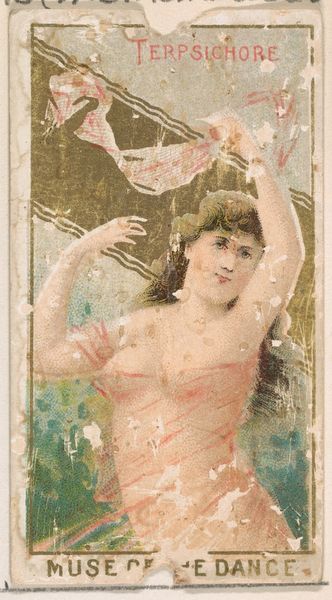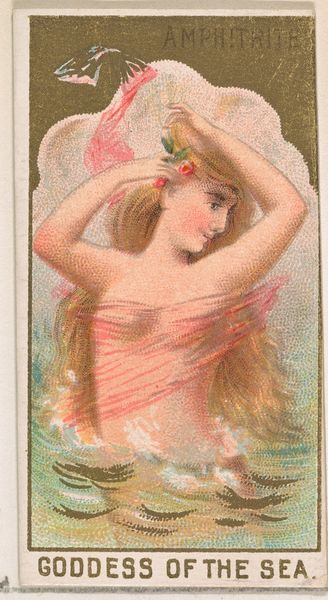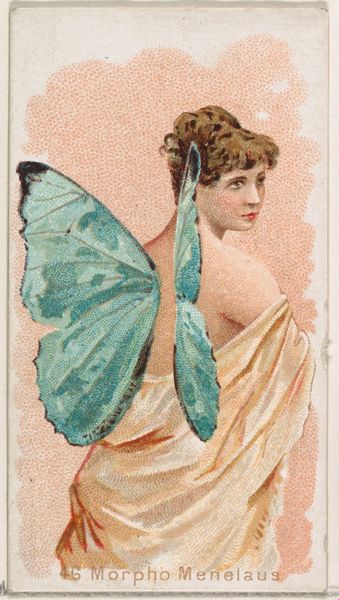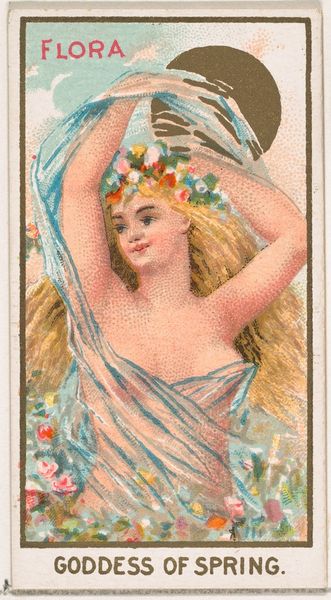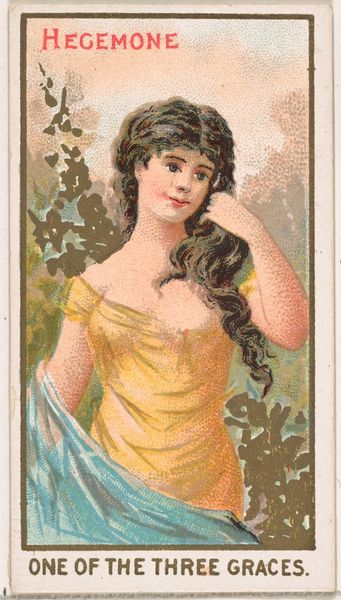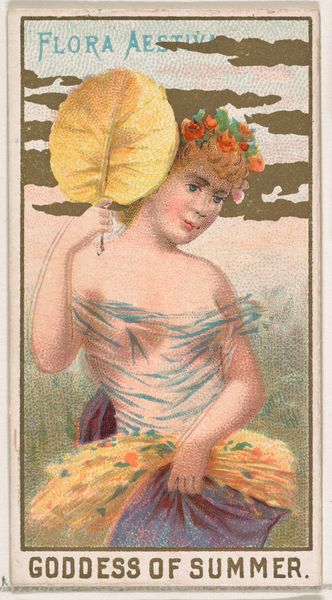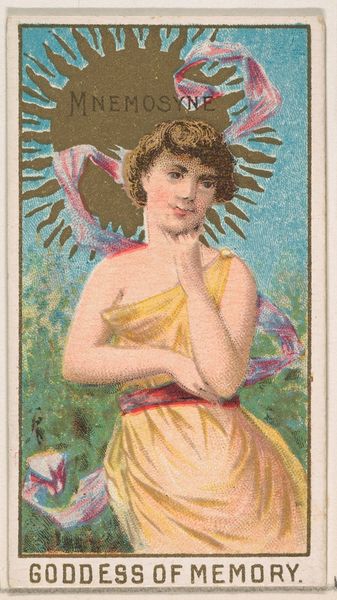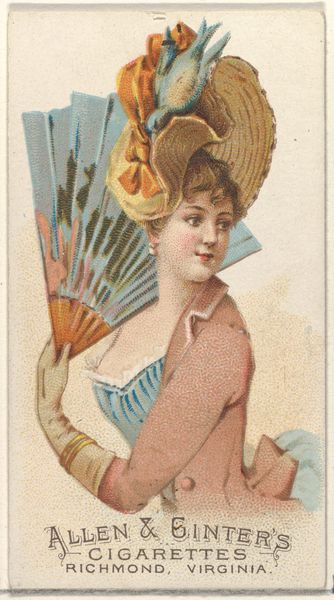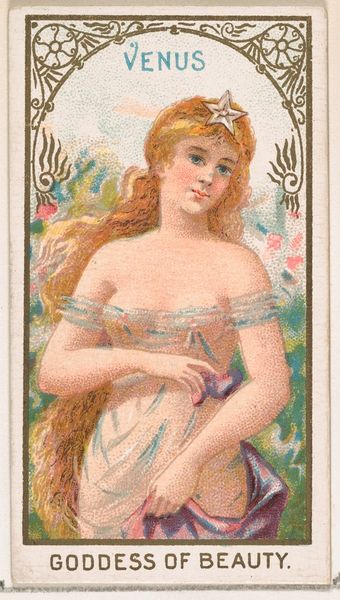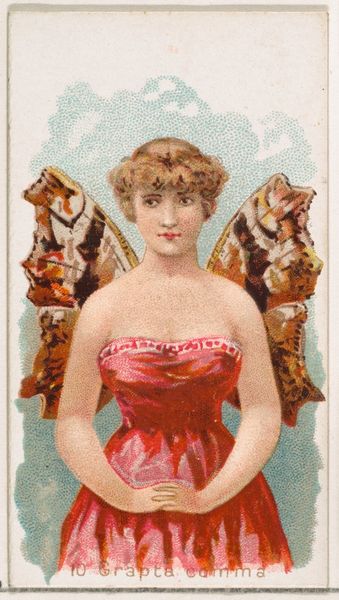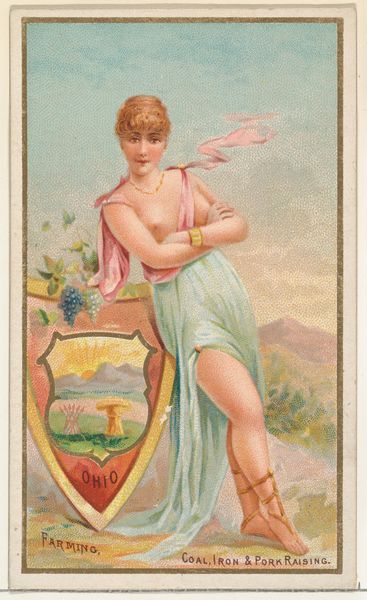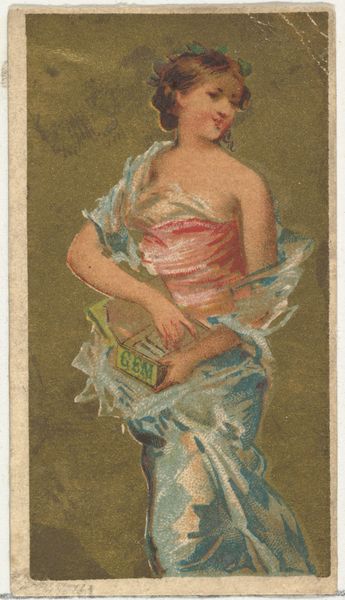
Polyhymnia, Muse of Song, from the Goddesses of the Greeks and Romans series (N188) issued by Wm. S. Kimball & Co. 1889
0:00
0:00
drawing, print
#
portrait
#
drawing
# print
#
figuration
#
symbolism
#
academic-art
Dimensions: Sheet: 2 3/4 × 1 1/2 in. (7 × 3.8 cm)
Copyright: Public Domain
Editor: This is "Polyhymnia, Muse of Song" from the "Goddesses of the Greeks and Romans" series, created in 1889 by Wm. S. Kimball & Co. It's a print, almost like a trading card. I find her gaze so demure. What do you see in this piece? Curator: I see a product of its time, deeply embedded in the evolving societal constructs of gender and representation in the late 19th century. How does the idealization of the female form, particularly in the context of mythology, intersect with the commodification inherent in its use as a trade card? Consider the male gaze; is Polyhymnia empowered as a muse, or objectified for consumption? Editor: I hadn’t thought about the male gaze so explicitly here. It feels a bit... conflicting. On one hand, she's a muse, representing something powerful. But, the image is also clearly designed to sell tobacco products. Curator: Exactly! It reflects the tightrope women walked – celebrated for their beauty and supposed virtue, yet simultaneously confined by societal expectations. This card isn't just about art; it's a socio-political artifact, speaking volumes about gender, commerce, and the construction of the feminine ideal in the Gilded Age. Can we even extract some insight on female agency in song and the arts when such agency occurs within this consumerism framework? Editor: That’s a really compelling way to look at it. It's not just a pretty picture; it's a conversation about power and representation. I'll definitely think about it differently from now on. Curator: Indeed, art doesn't exist in a vacuum. It’s a mirror reflecting and refracting the complexities of the society that produced it. Editor: I really appreciate you shedding light on how these societal pressures and economic contexts are inseparable from the art itself! Thanks for sharing your insight.
Comments
No comments
Be the first to comment and join the conversation on the ultimate creative platform.
